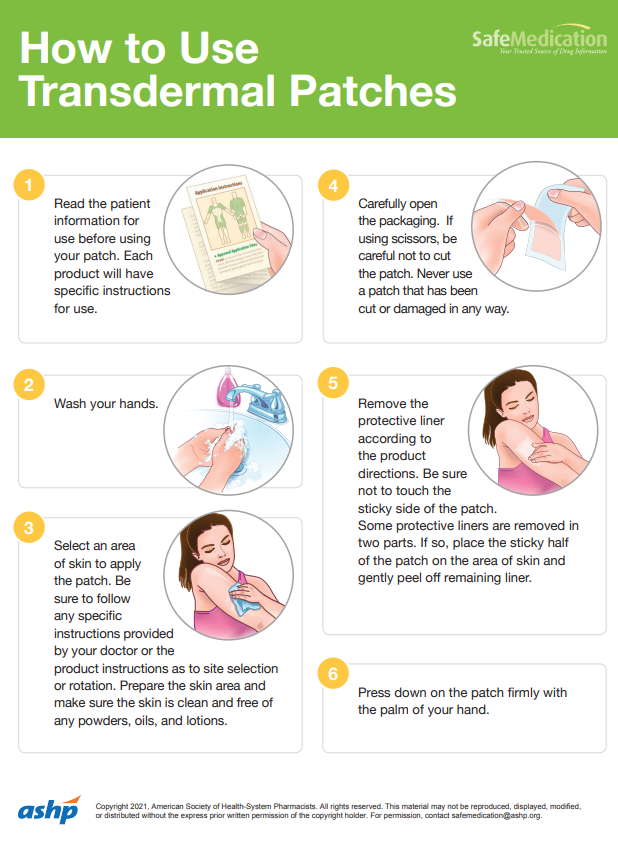Medicine patches (also called transdermal patches) are attached to your skin to slowly release medicine from the patch into your body over a period of time. There are a number of medicines available as patches including pain relievers, nicotine, hormones and medicines to treat angina and motion sickness.
The instructions of how to apply each patch and how often, is different for each type of patch. Your pharmacist will explain how to use your medicine patch. There should also be a leaflet inside the box, read it before using your patch. Each product will have specific instructions for use, but here is some general guidance.








